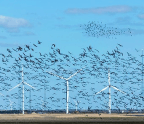n 1845, William Gambel first described the Wrentit to science as , linking it with titmice and chickadees, along with some other small insectivorous for it. The Wrentit resided in its own family (Chamaeidae) for many decades. But even as early as the latter half of the 1800s, several noted ornithologists acknowledged that it might have its roots among the “Timeliidae” (now Timaliidae) — a diverse Old World group known as babblers — and this was confirmed by Charles Sibley and Jon Ahlquist’s DNA-DNA hybridization studies in the early 1980s.
CLASSIFYING THE WRENTIT
Feb 04, 2023
1 minute
You’re reading a preview, subscribe to read more.
Start your free 30 days



